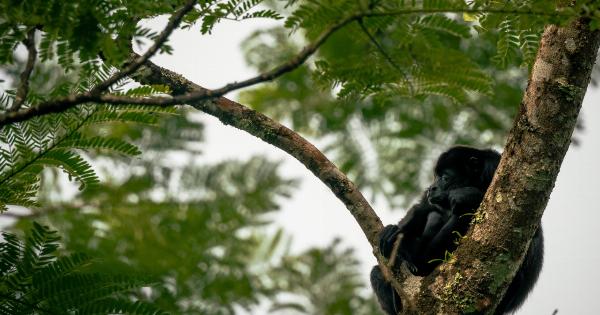The plain of monkeys in Old Epirus, located in the western part of Greece, has been facing a significant threat in recent years. The increasing population of monkeys in the region has led to various economic, environmental, and social concerns.
Combating this threat requires a comprehensive understanding of the issue and implementing effective measures to mitigate the adverse impacts. In this article, we will explore the challenges posed by the plain of monkeys in Old Epirus and discuss what you need to know to tackle this issue.
Economic Implications
The presence of a large number of monkeys in the plain of Old Epirus has resulted in significant economic implications for the region. These primates often raid crops, damaging agricultural plantations and leading to financial losses for farmers.
Additionally, they may destroy orchards and gardens, impacting the livelihoods of those dependent on these resources for income. The cost of repairing the damage caused by monkeys can be substantial, putting a strain on the local economy.
Furthermore, the increase in monkeys’ population has also impacted the tourism industry in the region. The plain of monkeys is a renowned tourist attraction, known for its natural beauty and diverse wildlife.
However, visitors may be deterred by the excessive presence of monkeys, especially if they pose a threat to human safety. This can result in a decline in tourism revenue, affecting the overall economic growth of Old Epirus.
Environmental Concerns
The proliferation of monkeys in Old Epirus raises significant environmental concerns. These primates have a direct impact on the local ecosystem as they feed on fruits, seeds, and vegetation.
Their foraging behavior can disrupt the natural balance of plant species, leading to changes in vegetation composition and reducing biodiversity. This can have cascading effects on other wildlife that depend on specific plant species for survival.
Moreover, monkeys are known carriers of diseases that can be transmitted to humans and other animals. The spread of such diseases can pose a threat to both human health and the well-being of domesticated animals in the region.
This necessitates the need for proactive measures to ensure public safety and prevent potential disease outbreaks.
Social Challenges
The presence of monkeys in Old Epirus has also given rise to several social challenges. These primates are highly adaptable and often venture into residential areas searching for food.
This can lead to conflicts between humans and monkeys, as the animals may damage property or exhibit aggressive behavior when approached.
Additionally, the plain of monkeys attracts both researchers and wildlife enthusiasts, creating a demand for experts and professionals in the field.
However, the lack of sufficient infrastructure and resources to address the issues related to monkeys can hinder the development of a robust research and conservation program in the region. This poses a social challenge as it limits the ability to effectively tackle the threat posed by the plain of monkeys.
Combating the Threat
Addressing the threat of monkeys in Old Epirus requires a multi-faceted approach that combines proactive measures, research, and community involvement. Here are some strategies that can be employed:.
1. Implementing Protective Measures
Developing and implementing protective measures can help mitigate the economic impact of monkeys on agricultural activities.
This can involve the installation of fences, deterrent devices, or employing individuals to patrol the fields and scare away monkeys. Providing financial assistance or insurance to farmers affected by monkey raids can also alleviate some of the economic burdens.
2. Promoting Sustainable Tourism
To address the decline in tourism due to the monkey population, it is essential to promote and market Old Epirus as a tourist destination, emphasizing its natural beauty and cultural heritage.
Collaborating with local tour operators, designing nature trails, and organizing guided tours that highlight responsible wildlife viewing can help attract visitors while minimizing potential conflicts with monkeys.
3. Wildlife Management and Research
Investing in wildlife management and research programs is crucial for understanding the behavior and ecology of monkeys in Old Epirus.
This knowledge will aid in developing effective management strategies and implementing appropriate conservation measures. Researchers can also play a key role in raising awareness among local communities about the importance of coexistence with wildlife and the long-term benefits of conservation efforts.
4. Public Education and Awareness
Developing educational initiatives aimed at both local residents and visitors is paramount.
These initiatives can include workshops, seminars, and awareness campaigns that highlight the ecological role of monkeys and the importance of preserving their natural habitat. Educating the public about proper waste management and reducing food sources accessible to monkeys can help minimize their presence in residential areas.
5. Collaboration and Partnerships
Combating the threat of monkeys requires collaboration among various stakeholders, including local authorities, researchers, farmers, and residents.
Establishing partnerships between these groups can foster cooperation, facilitate the exchange of knowledge and resources, and ensure a coordinated approach to manage the monkey population in Old Epirus.
Conclusion
The threat posed by the plain of monkeys in Old Epirus is a complex issue that requires proactive and comprehensive measures.
By addressing the economic, environmental, and social challenges associated with the increasing monkey population, it is possible to find sustainable solutions that protect the livelihoods of local communities and preserve the region’s natural heritage. With careful planning, effective management strategies, and collaboration among stakeholders, we can combat the threat of monkeys and ensure a harmonious coexistence between humans and wildlife in Old Epirus.






























